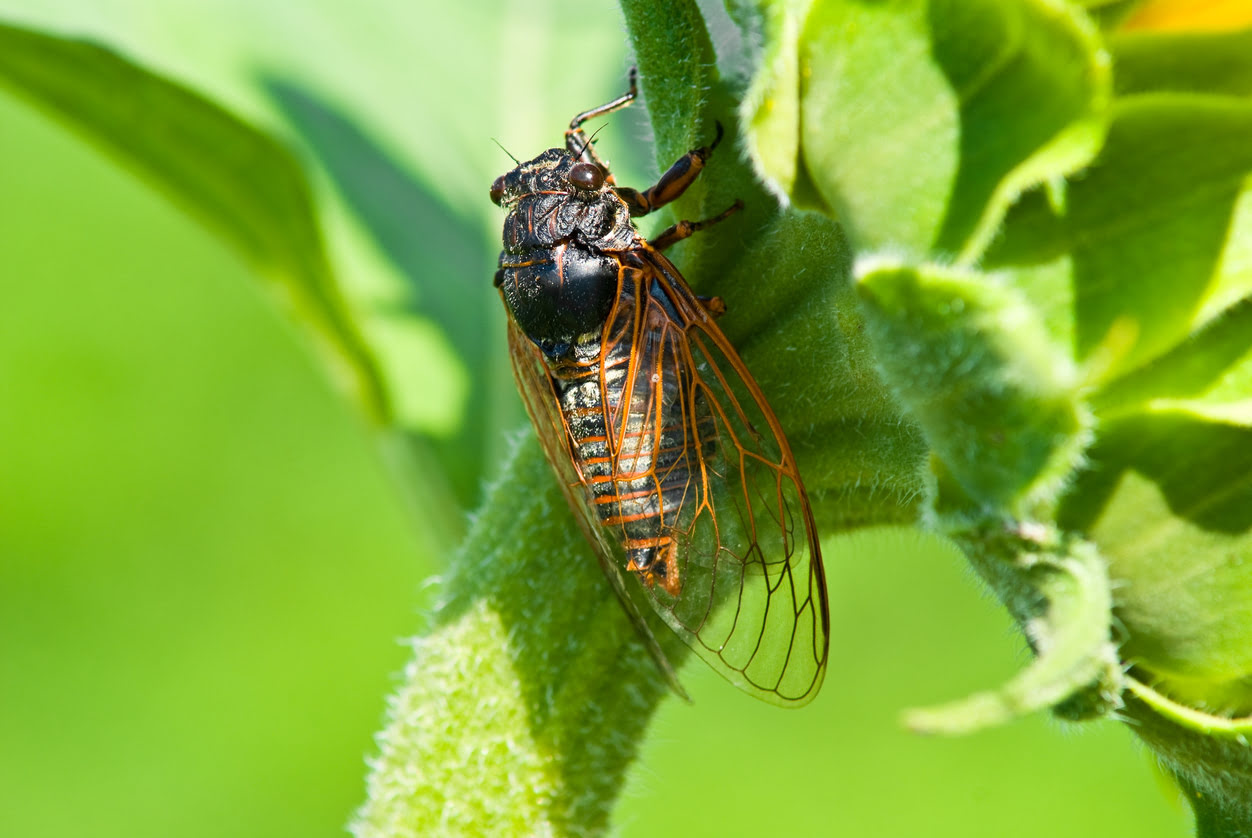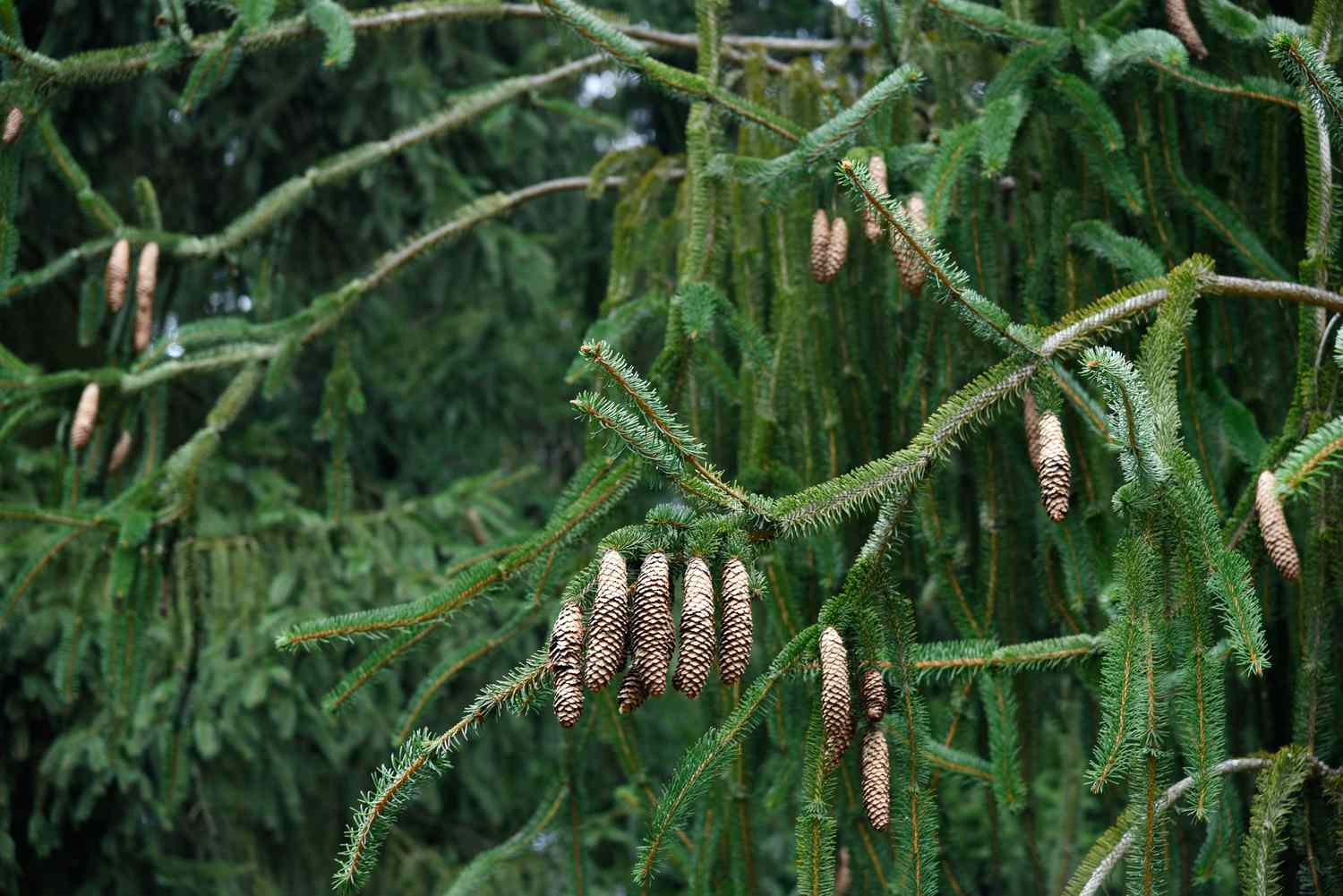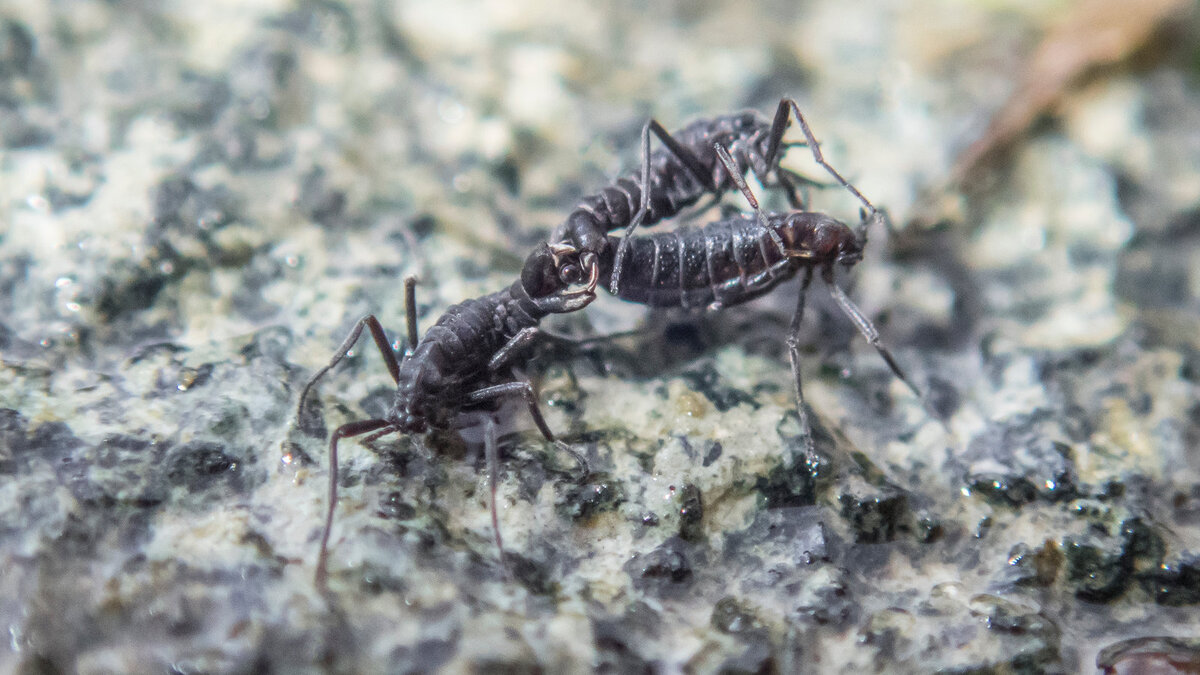Home>Gardening News and Trends>Latest News>How Long Does Insects Live


Latest News
How Long Does Insects Live
Modified: January 22, 2024
Discover the latest news on how long insects live. Gain fascinating insights into the lifespan of insects and their incredible adaptations.
(Many of the links in this article redirect to a specific reviewed product. Your purchase of these products through affiliate links helps to generate commission for Chicagolandgardening.com, at no extra cost. Learn more)
Table of Contents
Introduction
Welcome to the fascinating world of insects! These incredible creatures have evolved to thrive in almost every corner of our planet, showcasing a remarkable diversity of shapes, sizes, and behaviors. While some insects live for only a few days or weeks, others can survive for several years. Their lifespan is affected by various factors, such as their species, environment, and physiological adaptations.
Understanding the lifespan of insects is crucial for scientists, ecologists, and even everyday enthusiasts, as it provides valuable insights into their life cycles, reproductive strategies, and ecological roles. In this article, we will delve into the topic of insect lifespan and explore the factors influencing their longevity. We will also examine different types of insect lifespan and provide examples of both long-lived and short-lived insects.
So, let’s embark on a journey to uncover the secrets of the insect world, from the ephemeral existence of some species to the surprising durability of others. Get ready to be amazed by the wonders of insect lifespans!
Lifespan of Insects
The lifespan of insects can vary dramatically across different species. While some insects, like mayflies, have incredibly short lives spanning only a few hours or days, others, such as certain beetles, can live for several years or even decades.
One of the key factors influencing the lifespan of insects is their metabolic rate. Insects with a faster metabolic rate tend to have shorter lifespans, as their bodies must work harder and age more rapidly. On the other hand, insects with a slower metabolic rate can often live longer.
Another important factor is the presence or absence of predators and diseases. Insects that face high predation pressure or are susceptible to diseases often have shorter lifespans. Their survival is constantly threatened, leading to higher mortality rates and reducing their overall lifespan.
Environmental conditions also play a significant role. Insects living in harsh or unpredictable environments, such as deserts or arctic regions, may have shorter lifespans due to the challenges of resource scarcity and extreme weather conditions. Conversely, insects in more stable and resource-rich environments may have the opportunity to live longer.
Furthermore, the size of the insect can impact its lifespan. Generally, larger insects tend to have longer lifespans compared to smaller ones. This is because larger insects often have more energy reserves and can better withstand stressors, increasing their chances of survival over an extended period.
It’s important to note that the lifespan of insects can also be influenced by factors such as reproduction and development. Some insects, like butterflies, may have shorter adult lifespans, but their overall lifespan is prolonged when considering their juvenile stages. Others, like ants and bees, have specialized castes with different lifespans, where worker insects live for shorter periods while reproductive individuals can live for much longer.
In summary, the lifespan of insects is determined by a multitude of factors, including metabolic rate, predation pressure, environmental conditions, size, reproductive strategies, and developmental stages. Understanding these factors allows us to gain insights into the complex dynamics of insect populations and their role within ecosystems.
Factors Affecting Insect Lifespan
The lifespan of insects can be influenced by various factors that affect their survival and overall health. These factors can vary depending on the species and the environment in which they live. Here are some key factors that can impact the lifespan of insects:
Genetics and Species: Different species of insects have inherent genetic traits that determine their lifespan. Some species are naturally long-lived, while others are short-lived. Genetic factors can influence an insect’s ability to withstand stressors, resist diseases, and repair cellular damage, all of which can affect their lifespan.
Environmental Conditions: The environment plays a significant role in dictating an insect’s lifespan. Factors such as temperature, humidity, access to food and water, and exposure to toxins or pollutants can influence an insect’s longevity. Insects that are well-adapted to their environment and can efficiently regulate their physiological processes tend to have longer lifespans.
Diet and Nutrition: The quality and quantity of an insect’s diet can have a direct impact on their lifespan. Insects that have access to a diverse and nutrient-rich diet are more likely to live longer compared to those with limited food sources. Adequate nutrition provides the necessary energy for growth, reproduction, and maintenance of bodily functions, ultimately contributing to a longer lifespan.
Predation and Parasitism: Predators and parasites pose a constant threat to the lives of insects. Insects that are more vulnerable to predation or parasitic infestations may have shorter lifespans due to increased mortality rates. Natural defenses, such as camouflage, protective behaviors, or immunity to certain parasites, can help insects survive longer and evade their enemies.
Reproductive Strategies: The reproductive strategy an insect employs can influence its lifespan. Insects that invest heavily in reproduction, such as laying numerous eggs or engaging in multiple mating events, may have shorter lifespans as their energy is prioritized towards reproduction rather than self-maintenance. Conversely, individuals that allocate more energy towards survival may have longer lifespans, especially in species where longevity increases their chances of successful reproduction.
Physiological Adaptations: Some insects have unique physiological adaptations that allow them to live longer. For example, certain insects can enter a dormant state, such as diapause or hibernation, during harsh environmental conditions or periods of resource scarcity. This dormancy enables them to conserve energy and extend their lifespan until favorable conditions return.
Overall, the lifespan of insects is influenced by a combination of genetic factors, environmental conditions, diet, predation pressure, reproductive strategies, and physiological adaptations. Understanding these factors helps us appreciate the incredible diversity of insect lifespans and how insects have adapted to thrive in different habitats around the world.
Types of Insect Lifespan
The lifespan of insects can be categorized into different types based on their life cycles and the duration of their adult stage. Here are some common types of insect lifespan:
- Complete Metamorphosis: Many insects undergo complete metamorphosis, which consists of four distinct life stages: egg, larva (caterpillar or grub), pupa, and adult. In these insects, the larval stage is where the majority of growth occurs, while the adult stage is relatively short-lived. Examples of insects with complete metamorphosis include butterflies, beetles, bees, and flies.
- Incomplete Metamorphosis: Insects with incomplete metamorphosis go through three life stages: egg, nymph, and adult. The nymph stage resembles a miniature version of the adult, and there is no distinct pupal stage. The adult stage is longer-lasting compared to complete metamorphosis insects. Examples of insects with incomplete metamorphosis include grasshoppers, crickets, and dragonflies.
- Seasonal Lifespan: Some insects have a lifespan that is closely tied to seasonal changes in their environment. These insects emerge as adults during a specific season, mate, lay eggs, and then die shortly after completing their reproductive cycle. For instance, certain species of cicadas and mayflies have short adult lifespans that coincide with specific times of the year when environmental conditions are favorable for their reproduction.
- Eusocial Lifespan: Eusocial insects, such as ants, bees, and termites, have a complex social structure with distinct caste systems. Typically, worker insects have shorter lifespans ranging from a few weeks to several months, as their main role is to support the colony through tasks like foraging and nest maintenance. Queen bees and termite reproductives, however, can live significantly longer – years or even decades – as they are responsible for laying eggs and ensuring the survival of the colony.
- Longevity in Hibernation/Diapause: Certain insects, especially those in temperate or cold regions, enter a state of hibernation or diapause during unfavorable seasons. This dormancy allows them to survive harsh conditions and extend their lifespan until more suitable conditions return. For example, some species of butterflies and ladybugs hibernate during the winter months, prolonging their lifespan beyond what would be expected under normal circumstances.
These different types of insect lifespan highlight the incredible diversity of strategies that insects have evolved to navigate their environment and ensure their long-term survival. Each type has its own advantages and trade-offs, driven by the unique ecological and evolutionary pressures that insects face.
Examples of Long-Lived Insects
While many insects have relatively short lifespans, there are several species that have evolved to live remarkably long lives. These long-lived insects showcase unique adaptations and strategies that contribute to their extended lifespans. Here are some examples:
- Queen Ants: Queen ants are known for their exceptional longevity. In some species, the queen can live for several decades. Their primary role is to lay eggs and maintain the colony’s population. They are well-fed and protected by worker ants, allowing them to dedicate their energy to reproduction rather than daily foraging and survival tasks.
- Termites: Similar to queen ants, termite reproductives, also known as kings and queens, have impressive lifespans. They can live for several years, with some termite queens living up to 30-50 years. These long lifespans contribute to the stability and success of termite colonies, as the reproductive individuals are responsible for producing offspring and maintaining the population.
- Dragonflies: Dragonflies are known for their agile flight and stunning colors, but they also have relatively long lifespans compared to other insects. While the exact lifespan varies by species, some dragonflies can live for several months to a year as adults. Their ability to capture prey in mid-air and adapt to different habitats contributes to their prolonged survival.
- Monarch Butterflies: Monarch butterflies are famous for their long-distance migrations, but they also exhibit an impressive adult lifespan. While most butterflies live for just a few weeks, monarch butterflies that emerge in late summer or fall go through a process called “delayed mating” and can live for several months. This extended lifespan allows them to complete their migration and find suitable habitats to overwinter.
- Giant Stick Insects: Giant stick insects, also known as walking sticks, are masters of camouflage. These remarkable insects have extended lifespans compared to other insects, with some species living up to two years. Their ability to blend seamlessly with their surroundings and their slow-moving nature help them avoid predators and survive for longer periods.
These examples demonstrate the diversity of strategies that insects employ to achieve long lifespans. Whether through specialized reproductive castes, hibernation, or unique adaptations, these long-lived insects have evolved to thrive and ensure the survival of their species.
Examples of Short-Lived Insects
While some insects have evolved to live long lives, others have adopted a more ephemeral existence, with lifespans ranging from a few hours to a few weeks. These short-lived insects have unique strategies to maximize their chances of survival and reproduction within their limited lifespan. Here are some examples:
- Mayflies: Mayflies are notorious for their incredibly short adult lifespan, often lasting only a few hours to a few days. These insects have a unique life cycle that involves spending the majority of their lives as aquatic nymphs before emerging as adults for a brief period to mate and lay eggs. Their short adult lifespan is dedicated solely to reproduction before they perish.
- Adult Mosquitoes: While the overall lifespan of mosquitoes can vary, the adult stage of most mosquito species is relatively short. Female mosquitoes, in particular, have a short lifespan due to the energy-intensive process of blood-feeding and reproduction. Males, which primarily feed on plant nectar, also have a relatively short adult lifespan.
- Flies: Many species of flies, including houseflies and fruit flies, have short lifespans as adults. These insects undergo complete metamorphosis, with the larval stage being the longest part of their life cycle. Once they become adults, their main focus is on reproduction, and their lifespan is often limited to a few weeks.
- Ants and Bees Workers: In social insect colonies, the worker caste has a relatively short lifespan compared to the reproductive individuals. The workers, which are predominantly female, are responsible for tasks such as foraging, nest maintenance, and caring for the young. Their lifespan usually ranges from a few weeks to a few months, as their energy is devoted to supporting the colony rather than reproductive activities.
- Midges: Midges, also known as gnats, are tiny flying insects that are often seen swarming in large numbers. These insects have short adult lifespans, typically ranging from a few days to a couple of weeks. During this time, their primary goal is to mate and lay eggs before dying. Their abundance and short lifespan play important roles in ecosystem processes, such as nutrient recycling and pollination.
These examples showcase the diversity of strategies that short-lived insects employ to maximize their reproductive success within their limited lifespan. By focusing their energy on reproduction and utilizing efficient life cycle adaptations, these insects ensure the continuation of their species despite their fleeting existence.
Conclusion
The lifespan of insects is as diverse as the insects themselves. From the brief existence of mayflies to the multi-decade lifespan of queen ants and termite reproductives, insects have evolved various strategies to adapt to their environments and ensure the survival of their species.
The factors influencing insect lifespan are numerous and include genetics, environmental conditions, diet, predation, reproductive strategies, and physiological adaptations. These factors interact in complex ways, shaping the lifespan of each species and influencing their role within ecosystems.
Understanding the lifespan of insects provides valuable insights into their life cycles, reproductive strategies, and ecological roles. It highlights the incredible diversity and adaptability found in the insect world, as well as the intricate interactions between insects and their environment.
Whether it is the ephemeral existence of mayflies or the extended lifespan of queen ants, each type of insect lifespan serves a specific purpose within the intricate web of life. These diverse lifespans contribute to the overall resilience and stability of ecosystems, as each species plays a unique role in maintaining the balance of nature.
So, the next time you encounter an insect, take a moment to marvel at its lifespan and appreciate the remarkable adaptations that have allowed insects to thrive and persist for millions of years. From the shortest-lived mayfly to the ancient queen ant, these small but mighty creatures continue to captivate and inspire us with their incredible journey through life.










